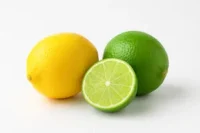Hi-Tech Farming to enhance Agricultural productivity in Future
Published: 17 Feb 2024
As a farmer and a tech fan, I constantly look for ways to revolutionize my farming practices. In the face of growing global food demand and the need to mitigate environmental challenges, it’s time to look beyond traditional methods of agriculture. That’s when I stumbled upon the concept of hi-tech farming.
It’s not just a trending buzzword; it’s a promising path to sustainable and efficient agriculture. In this blog post, I’ll share my journey exploring the power of hi-tech farming, a revolution that’s not just about introducing state-of-the-art technology into farming but also about enhancing productivity, sustainability, and efficiency in the agricultural sector.
If you’re as intrigued as I was, keep reading to learn more about high-tech greenhouses, autonomous tractors, and how countries like the Netherlands lead the way in this hi-tech farming era.
Exploring the Concept of High-Tech Greenhouses
2.1 Unveiling the Secret Garden
Farming is where you can control the climate, decide when the rain falls, and even when the sun shines. These are not just ordinary greenhouses; they are equipped with cutting-edge technology, allowing us to manipulate the environment according to the crop’s needs. From precise irrigation systems and climate control to remote crop monitoring, these greenhouses are the future of farming. They allow us to maximize crop yield while reducing resource consumption, which is critical as we face increasing environmental challenges.
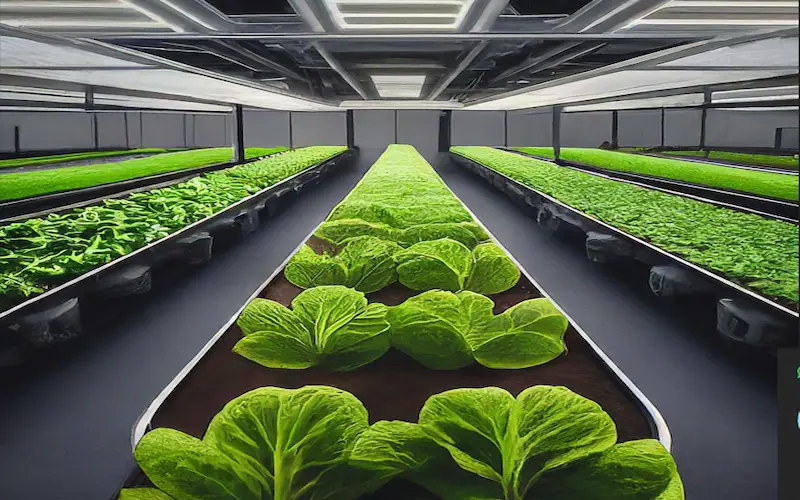
2.2 The Magic of High-Tech Greenhouses
They use a combination of advanced technologies to fine-tune the growing conditions for each crop. Farmers can adjust temperature, humidity, light intensity, and even CO2 levels through climate control systems to create the perfect environment for their crops. Precision irrigation systems ensure each plant receives the right amount of water, preventing overwatering and saving precious resources.
Remote monitoring technology allows farmers to check the health of their crops from anywhere, at any time, and take immediate action if necessary. It’s like having a magic wand to create the perfect crop-growing conditions.
2.3 The Netherlands: Leading the Way
High-tech greenhouses are not a mere concept but a reality in many parts of the world. The Netherlands, for instance, has emerged as a leader in this field. Despite its small size, it is the world’s second-largest agricultural exporter, thanks to its state-of-the-art greenhouses.
These high-tech greenhouses employ advanced techniques to reduce water usage, eliminate chemical pesticides, and optimize crop production. The result is eco-friendly and economically efficient farming practices that make the Netherlands a beacon of sustainable agriculture.
2.4 High-Tech Greenhouses Come to America
The success of the Netherlands has inspired other countries, including the United States, to follow suit. Companies like AppHarvest and Kentucky Fresh Harvest are investing heavily in high-tech greenhouses. They aim to replicate the success of their Dutch counterparts by integrating advanced technologies into greenhouse operations.
This optimizes crop yield and mitigates environmental impacts, making it a win-win for all parties involved. High-tech greenhouses are taking the American agricultural sector by storm, heralding a new era of efficient and sustainable farming.
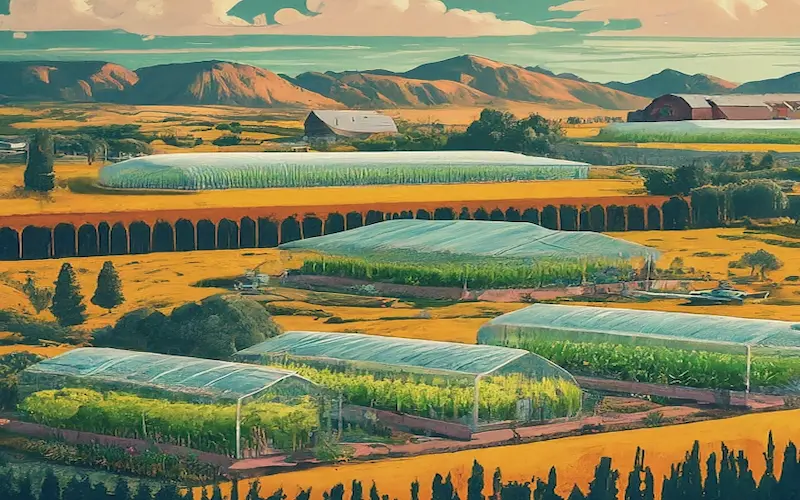
The Netherlands: Leading the Way in Hi-Tech Farming
The Netherlands, often called the tiny country that feeds the world, is leading hi-tech farming. This tiny nation is a behemoth in the world of agriculture, being the globe’s number two exporter of food as measured by value, second only to the United States, which has 270 times its landmass.
The secret behind the Netherlands’ agricultural success is High-tech farming, particularly in their high-tech greenhouses.
What sets these high-tech greenhouses apart is their advanced capabilities. Farmers in the Netherlands embrace a tech-driven approach to growing crops that significantly reduces water usage, eliminates the need for chemical pesticides, and optimizes crop production.
The intelligent integration of cutting-edge technologies like climate control systems, precision irrigation, and remote monitoring results in a farming practice that is as sustainable as it is productive. Here’s a closer look at some of these technologies:
Climate Control Systems
These systems offer precise control over the growing environment. Farmers can adjust temperature, humidity, light intensity, and CO2 concentration, significantly influencing plant growth.
Precision Irrigation
Rather than flooding fields with water, precision irrigation allows for carefully applying water and nutrients directly to the plant’s root zones. This method uses less water and ensures that plants receive precisely what they need when they need it.
Remote Monitoring
Through sensors and automated systems, farmers can monitor the health of their crops in real-time, identifying any potential issues early on. This dramatically reduces crop losses and improves overall farm efficiency.
The effectiveness of these systems is evident in the Netherlands’ agricultural output. The country’s high-tech greenhouses can produce yields that are far superior to those of traditional farming methods. And they do this while using fewer resources and causing less environmental harm.
The Dutch have shown that with the right blend of technology and innovative thinking, traditional farming can be transformed into an efficient, sustainable practice that can feed the world without harming the planet.
4. “Adoption of High-Tech Greenhouses in the United States”
The United States is also beginning to get its hands dirty in hi-tech farming, specifically by investing in high-tech greenhouses. Companies such as AppHarvest and Kentucky Fresh Harvest are leading this effort. They are harnessing the same techniques used by their Dutch counterparts to promote sustainable food production and combat resource constraints.
By incorporating advanced technology into their operations, these American companies set new crop yields and environmental stewardship standards. They are embracing climate control systems, precision irrigation, and remote monitoring, all to produce more food with less. For example, AppHarvest’s massive greenhouse in Kentucky uses 90% less water than traditional farming.
However, the adoption of high-tech greenhouses has its challenges. There are issues to consider, such as the high initial investment for the technology and the need for skilled labor to operate and maintain these systems. Furthermore, there are concerns about the environmental impact of these greenhouses, as they often require significant energy to run. However, these concerns can be mitigated with advancements in renewable energy and energy efficiency.
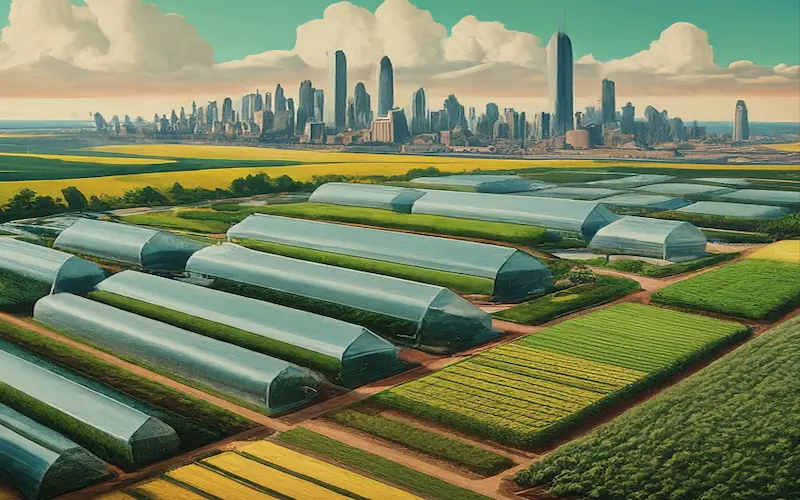
1. Heavy initial investment:
The cost of setting up a high-tech greenhouse can be very high, making it challenging for some farmers to adopt this technology.
2. Need for skilled labour:
These greenhouses require physically capable labor and are adept at using complex technology.
3. Energy consumption:
High-tech greenhouses can consume much energy, potentially placing stress on local power grids and contributing to greenhouse gas emissions.
Despite these challenges, the potential benefits are enormous. American farmers can drastically increase crop yields by adopting high-tech greenhouses while minimizing their environmental footprint. This, in turn, can contribute to a more sustainable and efficient agricultural sector in the United States. Therefore, the future looks bright for hi-tech farming in America. It’s a field ripe for innovation, and the benefits can be harvested for future generations.
5. “The Rise of Autonomous Tractors in Agriculture”
In recent years, the landscape of agriculture has witnessed a dramatic transformation with the advent of autonomous tractors. Once considered a futuristic idea, this technology has become a reality and revolutionized farming operations. These autonomous tractors automate previously performed physical tasks, increasing productivity and reducing labor costs.
One company that plays a critical role in this transformation is Bear Flag Robotics. This Silicon Valley-based start-up is at the forefront of developing autonomous tractors for hi-tech farming. By retrofitting existing tractors with sensors and actuators, Bear Flag Robotics is paving the way for automation in farming operations. The company’s innovative technology is designed to perform secondary tillage after a harvest, enhancing efficiency and streamlining farming processes.
The shift towards equipment automation in agriculture is not limited to autonomous tractors alone. Various forms of equipment automation, such as auto-steering systems and precision seeders, have become available for farming equipment. This next level of precision and accuracy dramatically reduces human error and improves crop yields. Data collection and analysis are also integral to this digital evolution, providing valuable insights for optimizing farming practices.
In embracing these hi-tech advancements, farmers can now make data-driven decisions. They can assess the soil health, monitor crop growth, and predict weather changes, allowing them to optimize resource allocation. These autonomous tractors and other automated equipment are tools and become the farmers’ partners in achieving sustainable and efficient farming. While the future of agriculture is boundless, it’s clear that autonomous tractors are a driving force.
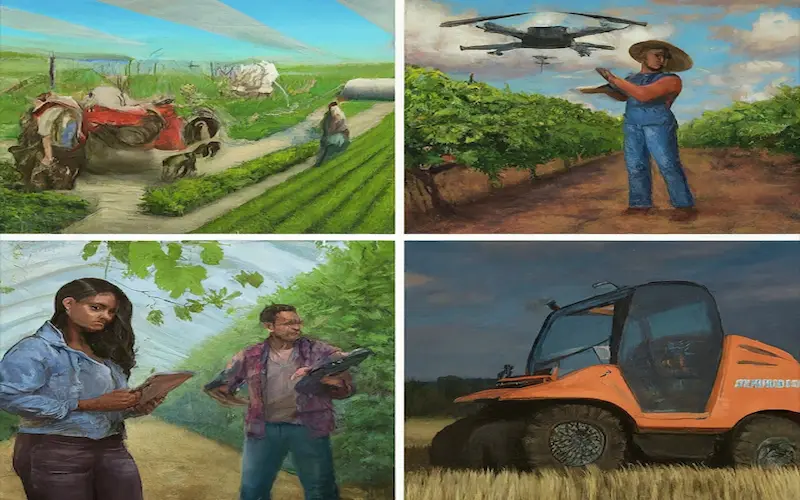
6. “Bear Flag Robotics: Pioneering Automation in Farming”
6.1 Embracing the Future of Farming
The farming landscape is rapidly evolving, and Bear Flag Robotics is at the forefront. A trailblazer in the Silicon Valley start-up scene, this company is taking bold strides toward automating farming operations. By retrofitting existing tractors with cutting-edge sensors and actuators, Bear Flag Robotics is enhancing the efficiency of farming and redefining it entirely.
6.2 Revolutionizing Traditional Practices
The brilliance of Bear Flag Robotics lies in its innovative approach to an age-old industry. Autonomous tractors have the power to streamline farming operations like never before. Imagine the vast tracts of farmland being tilled, sown, and reaped by machines, functioning seamlessly without human intervention. Tasks like secondary tillage after harvest are performed autonomously, freeing up valuable time for farmers and reducing labor costs.
6.3 A New Benchmark in Productivity
Automating farming operations doesn’t just spell convenience but also increases productivity. With tractors that can operate around the clock, we’re looking at a future where farmland is utilized to its utmost potential, generating higher crop yields and ultimately feeding more mouths.
In a world where food security is an ever-pressing concern, the role of companies like Bear Flag Robotics in bolstering the agricultural sector cannot be underestimated.
6.4 Beyond Tractor Automation
The vision of Bear Flag Robotics extends beyond just tractor automation. The company is part of a more significant digital revolution sweeping the agricultural industry. Technology is infiltrating every aspect of farming, from precision seeders to auto-steering systems. By collecting and analyzing data, farmers gain valuable insights into their trade’s intricacies, allowing them to make informed decisions and optimize their resources.
6.5 The Road Ahead
As we stand at the cusp of a new era in agriculture, companies like Bear Flag Robotics are carving the path towards a future where farming is efficient, sustainable, and highly productive. While there will undoubtedly be challenges to overcome – from technological hurdles to issues of affordability and accessibility – the prospects of automated farming are undeniably promising.
Our collective journey towards achieving this future is just beginning, and I, for one, am excited to see where it leads us.
7. “The Role of Equipment Automation and Data Analysis in Hi-Tech Farming”
The digital revolution is fascinatingly transforming our lives and reshaping the agriculture sector. One aspect where this stands out is the role of equipment automation and data analysis in hi-tech farming. As we probe into hi-tech agriculture, we cannot ignore the immense benefits of these technological advancements.
When we talk about equipment automation, it’s impossible not to mention the advent of auto-steering systems and precision seeders. These are replacements for traditional farming techniques and represent a new era of farming efficiency. The auto-steering systems allow farmers to drive their tractors along a pre-determined route, freeing their hands for other tasks and reducing fatigue.
Precision seeders, on the other hand, enable farmers to plant seeds at exact distances and depths, minimizing waste and increasing crop yield. Here are some ways these technologies are revolutionizing farming:
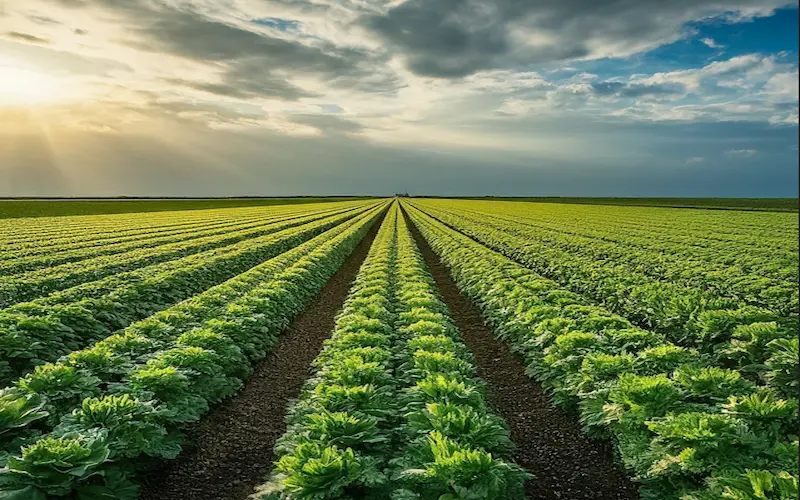
Enhanced Precision
By leveraging GPS and GIS technologies, auto-steering and precision seeding systems ensure that every square inch of the farm is utilized optimally, reducing the instances of overlapping or missed areas.
Reduced Human Error
Automation minimizes the risk of human error, leading to more consistent results and, ultimately, better crop yields.
Increased Productivity
By automating routine tasks, farmers can focus on other critical aspects of their farm, increasing productivity.
Moving on to data analysis, it’s like the secret sauce in the recipe of hi-tech farming. With the advent of sensors, software, and remote monitoring technologies, farmers can collect a wealth of data about their fields. This data can provide insights into soil health, weather patterns, and pest activity.
By analyzing this data, farmers can make more informed decisions, optimize resources, and improve their farming practices. Here are some benefits of data analysis in hi-tech farming:
Predictive Analytics
With the help of data analysis, farmers can predict crop yields, identify potential pest outbreaks, and even forecast market trends, enabling them to plan and act accordingly.
Resource Optimization
Data-driven insights can help farmers understand where to allocate their resources best, reducing waste and maximizing productivity.
Sustainable Practices
By providing information about soil health, water usage, and weather patterns, data analysis can help farmers adopt more sustainable farming practices.
In conclusion, equipment automation and data analysis are vital in hi-tech farming. They enhance efficiency and productivity and pave the way towards more sustainable and resilient farming practices. As we journey further into the world of hi-tech agriculture, it’s fascinating to imagine what other innovations are on the horizon.
8. “The Pros and Cons of Hi-Tech Agriculture Equipment”
The embrace of hi-tech agriculture equipment is akin to opening a Pandora’s box filled with promising benefits yet not devoid of challenges. One of the most profound advantages revolves around increased productivity and sustainability.
This means optimal water usage, a massive reduction in our reliance on chemical pesticides, and a significant increase in crop yields. We are talking about being able to do more with less and in a manner that is kinder to our planet.
However, as with most technological advancements, integrating hi-tech farming equipment is still challenging. The first is the right-to-repair issue. As sophisticated as it is, hi-tech equipment will inevitably require maintenance and repair.
Farmers need access to affordable and reliable repair services to keep their machinery running smoothly. Without this, the machinery could become more of a burden than a boon.
Next, there’s the matter of cost. High-tech farming equipment is costly. The hefty initial investment may be a daunting hurdle for smaller-scale farmers to overcome. This doesn’t only apply to the upfront costs of purchasing the equipment but also includes the ongoing costs of maintenance and repair.
Consequently, this could restrict the widespread adoption of such technology and deepen the divide between large-scale and small-scale farmers.
The integration of technology also raises cybersecurity concerns. As our equipment becomes increasingly digital and connected, the potential for cyber threats also rises. Protecting agricultural data and systems from these threats is paramount; thus, additional investments in cybersecurity measures will be needed.
The potential environmental impacts of hi-tech equipment need to be assessed. Although sustainability is a key selling point of hi-tech farming, weighing the benefits against any potential negatives is crucial. For instance, the production and disposal of complex farming equipment might have significant environmental implications.
9. “Recommendations for Implementing Hi-Tech Farming Practices”
There are several factors that farmers need to consider.
Financial feasibility of the technology
Evaluating the costs associated with acquiring, installing, and maintaining such advanced equipment and the expected return on investment is essential. Hi-tech farming equipment is, no doubt, an investment. But remember, it has the potential to pay off significantly in the long run with increased productivity, reduced resource consumption, and improved crop yields.
Sustainability
Sustainability should be at the heart of your decision-making process. When considering adopting hi-tech farming practices, you need to assess the environmental impact of these technologies. The goal is to ensure the benefits outweigh any potential negative consequences.
Importance of legislative support
Collaboration between farmers, policymakers, and technology providers is crucial to successfully integrating hi-tech farming equipment. For instance, right-to-repair laws need to be in place to allow farmers to maintain and repair their equipment quickly. This assures the equipment’s longevity and reliability and reduces dependency on external service providers.
Stay informed and vigilant about potential cyber threats.
As farming becomes more digital, the risk of cyber-attacks increases. Implementing strong cybersecurity measures to protect your farming operation is no longer a luxury but a necessity. Hi-tech farming undoubtedly paves the way for a more sustainable and efficient agricultural sector.
However, careful implementation and consideration of these factors can ensure that its promise is fully realized.
10. “My Final Thoughts on the Future of Hi-Tech Farming”
In reflecting on the path of hi-tech farming, I can’t help but feel a sense of awe and excitement. We’ve traversed through the landscape of high-tech greenhouses, autonomous tractors, and the role of data analysis in this revolution. We’ve glimpsed into the Netherlands leading the charge and the growing adoption of these practices in the United States.
It’s undeniable that the future of farming is here, and it’s high-tech. The innovations we’ve explored present immense opportunities to increase efficiency, produce higher-quality crops, and reduce the environmental impact of farming. But as we’ve discussed, they come with their challenges, too. High upfront costs, dependence on technology, and the need for specialized training can be barriers to entry.
That being said, the pros outweigh the cons. Yes, there are challenges, but there are also solutions, and the potential benefits are too significant to ignore. As we move forward, farmers, policymakers, and tech companies must work together to ensure these innovations are accessible and beneficial to all.
To those considering the adoption of hi-tech farming practices, my advice is to start small. Experiment with one or two technologies, learn from the process, and scale up gradually. Remember, technology is a tool, not the end goal. The objective should always be to create a more sustainable, efficient, and productive farming system.
conclusion
the future of hi-tech farming is bright and full of potential. It’s a journey of continuous learning, adaptation, and innovation. As we continue to explore and harness the power of technology, I am optimistic that we can transform farming for the better – for us and future generations. Indeed, the evolution of agriculture is a testament to our ability to innovate and adapt in the face of challenges. And in this realm, I can’t wait to see what’s next.
Hi-tech farming, also known as precision agriculture, uses modern technology and equipment to increase the quantity and quality of agricultural products. It includes practices such as high-tech greenhouses, autonomous tractors, and data analysis.
A high-tech greenhouse is a greenhouse that utilises advanced technologies to create optimal growing conditions for plants. This includes artificial lighting, automated wagering systems, and climate control systems.
The Netherlands is a world leader in hi-tech farming due to its innovative use of high-tech greenhouses. They have developed highly efficient, sustainable farming techniques that allow them to produce large quantities of high-quality produce year-round.
In the United States, high-tech agriculture is being adopted through high-tech greenhouses and the rise of autonomous tractors. Companies such as Bear Flag Robotics are pioneering automation in farming.
Automation in hi-tech farming involves using autonomous tractors and other equipment to carry out various farming tasks. Data analysis optimises farming practices by collecting and analysing multiple aspects of the farming process.
Hi-tech farming equipment can increase efficiency, reduce labour costs and enhance product quality. However, it can also be expensive to implement, require technical expertise, and may only be suitable for some types of farms.
Before implementing hi-tech farming practices, it’s essential to understand the specific needs of your farm, the potential benefits, and the costs involved. It’s also beneficial to start small by automating one aspect of the farming process and gradually expanding over time.
The future of hi-tech farming is promising, with continued technological advancements and growing interest in sustainable farming practices. However, adopting these practices will depend on various factors, including cost, accessibility, and the evolving needs of the agricultural sector.

- Be Respectful
- Stay Relevant
- Stay Positive
- True Feedback
- Encourage Discussion
- Avoid Spamming
- No Fake News
- Don't Copy-Paste
- No Personal Attacks



- Be Respectful
- Stay Relevant
- Stay Positive
- True Feedback
- Encourage Discussion
- Avoid Spamming
- No Fake News
- Don't Copy-Paste
- No Personal Attacks


